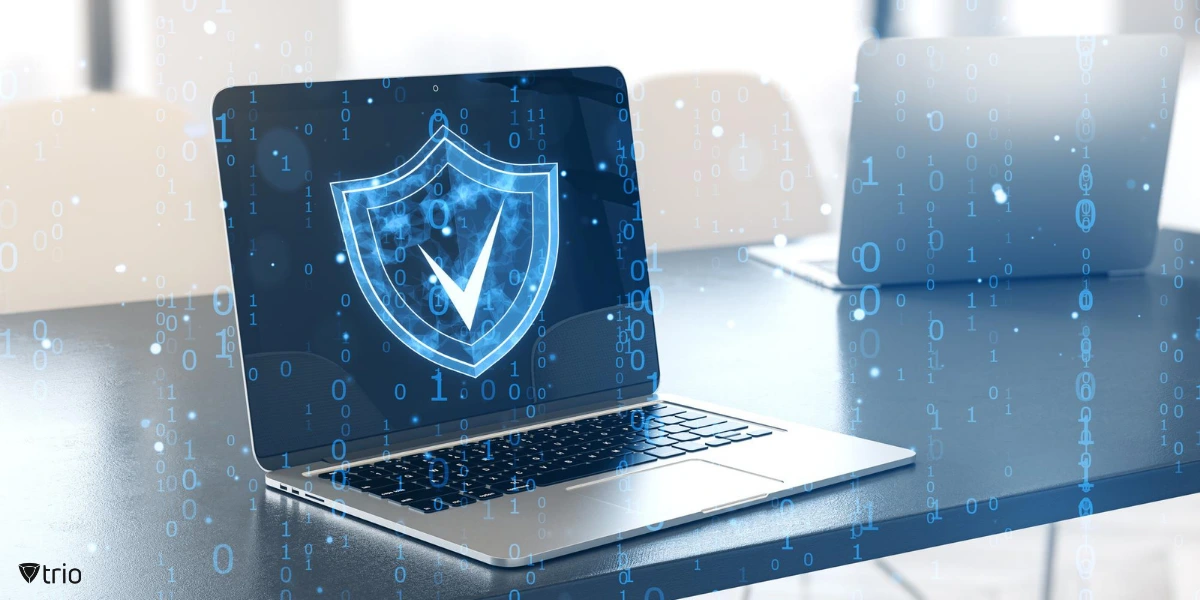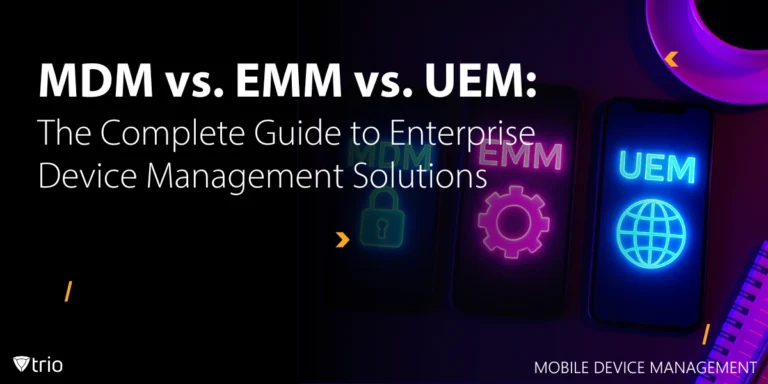Protecting workstations is critical to safeguarding sensitive company data and preventing data breaches. A well-implemented workstation security policy outlines the essential steps organizations must take to secure their systems and minimize vulnerabilities. Whether you’re developing a new security policy or refining an existing one, this guide will walk you through the best practices, essential components, and tools you need to maintain robust workstation security.
What is a Workstation Security Policy?
A workstation security policy is a formal document that outlines the standards, rules, and security controls required to secure workstations within an organization. These policies aim to minimize risks to sensitive information, reduce attack surfaces, and ensure compliance with organizational security requirements.
Workstation security policies often cover several domains of IT security. By organizing IT security policies by domain, businesses can ensure every part of their infrastructure, including physical and digital workstations, adheres to the highest security standards. An effective policy also includes directives on workstation security controls, covering areas like data encryption, access control, and operating system security patches.
The Importance of a Workstation Security Policy
Workstations are common entry points for cyber threats. Without proper security measures in place, businesses expose themselves to increased risks of data breaches, malware infections, and unauthorized access to sensitive information. A workstation security policy template provides a high-level guide that ensures consistency and thoroughness in security practices across the organization. Keep reading for a free downloadable version!
This policy plays a crucial role in reducing the risk of cybersecurity incidents. It outlines steps employees and administrators should take to protect against security threats, from phishing attempts to smishing attacks and spyware. Establishing clear guidelines also helps maintain regulatory compliance and builds a stronger human firewall within the organization.
Components of a Strong Workstation Security Policy
A strong workstation security policy must address several key areas to ensure comprehensive protection. First, access control policies are crucial to prevent unauthorized users from accessing sensitive data. Employees should only have access to the information and systems necessary for their job functions. Policies must also mandate the use of device encryption to protect data in case of hardware theft or loss.
Regular audits and assessments are another critical element of a robust policy. Using security assessment tools helps identify vulnerabilities and weaknesses in the workstation setup. These evaluations should include reviewing firewall configurations and ensuring that the latest patches and updates are installed.
Best Practices for Workstation Configuration
An effective workstation configuration security policy should include steps for securing both the software and hardware components of the workstation. This ensures that systems remain compliant with the organization's security standard and minimizes the attack surface.
First, the operating system must always be updated to the latest version to patch any vulnerabilities. Additionally, the workstation should be configured to limit physical access—for example, by enforcing login passwords and ensuring that screens lock after a short period of inactivity. Security controls like full disk encryption should be mandatory to protect stored data.

Secure Admin Workstation Best Practices
Securing administrative workstations is especially important because they often have higher-level privileges. Implementing secure admin workstation best practices minimizes the risks associated with privileged access.
One essential step is ensuring that admin workstations are isolated from everyday network access. Limiting remote access and enforcing strict authentication methods also mitigates the risk of unauthorized users gaining entry. Admin workstations should regularly receive updates to their operating system and be protected with tools like anti-malware software to defend against threats.
Incident Response and Workstation Security
A strong workstation security policy must also include guidelines for handling security incidents. Even with the best precautions, there is always a possibility that a breach or incident could occur. That's why having an incident response plan specific to workstations is essential.
These response protocols should be integrated with the organization's broader cybersecurity incident response plan. Immediate steps, such as isolating compromised workstations and conducting forensic analysis, are key to minimizing damage. Documenting these incidents and adjusting the workstation security policy based on lessons learned ensures continuous improvement.
Change Organization Security Policy on the Workstation
As businesses evolve, so must their security policies. Periodically reviewing and updating your organization's security policy on the workstation is essential to staying ahead of emerging threats. As new vulnerabilities are discovered and security requirements change, it’s important to modify workstation security controls to keep up with the latest best practices.
One key area to revisit is user access. As employees change roles, their access levels must be adjusted accordingly to reduce the risk of internal threats. Similarly, ensuring that the policy includes directives on how to protect employee data reinforces data security and privacy.
Trio's Role in Enhancing Workstation Security
While developing and enforcing a strong workstation security policy is essential, managing multiple workstations across an organization can be challenging. This is where Trio, a modern MDM solution, steps in. Trio helps businesses simplify and automate their workstation security practices, allowing IT teams to implement consistent security controls across all devices.
With features like active directory integration and centralized management, Trio ensures that sensitive data is protected, reducing the risk of security incidents. Plus, it offers tools for data loss prevention and remote access management, making it an all-in-one solution for managing workstation security.
Interested in learning how Trio can simplify your workstation security? Schedule a free demo today and discover how our MDM solution can protect your organization’s critical data.
Conclusion: Secure Your Workstations with Confidence
With the increasing of threats, a solid workstation security policy is no longer optional—it’s a necessity. From securing admin workstations to implementing robust incident response plans, following the steps outlined in this guide will help your organization minimize vulnerabilities and enhance data protection. Don’t leave your workstations exposed to cyber threats; take action now to safeguard your most valuable assets.
Get Ahead of the Curve
Every organization today needs a solution to automate time-consuming tasks and strengthen security.
Without the right tools, manual processes drain resources and leave gaps in protection. Trio MDM is designed to solve this problem, automating key tasks, boosting security, and ensuring compliance with ease.
Don't let inefficiencies hold you back. Learn how Trio MDM can revolutionize your IT operations or request a free trial today!





